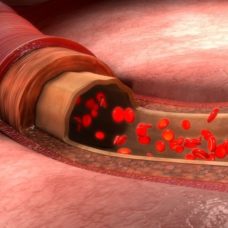Engineers have used 2D materials to design a new high-performance memory device that can be fully erased with light.
Currently available silicon-based memory chips have several limitations: they are rigid, bulky, and tend to overheat, which degrades their efficiency over time.
With the continuous miniaturization of modern electronics comes technical challenges and increasingly prohibitive costs that the use of conventional materials and techniques simply cannot sustain for long.
After years of exploring the electronic properties of graphene, which lacks bandgap, scientists have realized the critical importance of two-dimensional materials, whose thickness is in the range of a few atoms, or a few nanometers.
2D semiconductor materials enable system-on-panel devicesClick To TweetSeveral types of 2D semiconductor materials, Transition Metal Dichalcogenides (TMDCs), have been investigated for use as memory devices, especially MoS2 and other members of the family, such as MoSe2, WS2, WSe2.
Chemically stable and mechanically robust, MoS2 is a nanoscale semiconductor material that has recently appeared as a very promising alternative for various applications in optoelectronics, flexible electronics, nanoelectronics, and spintronics.
Light-Erasable Memory Based on 2D Materials
As a prime example of this new class of materials, MoS2 is stimulating many research initiatives into future transistors and ultrathin memory devices.
Researchers at the Institute of Microelectronics Chinese Academy of Sciences (IMECAS), and Fudan University have used 2D MoS2 to design a new light-erasable memory.
According to the study, published in Applied Physics Letters, “The memory exhibits a sufficient memory window, fast programming and erasing (P/E) speed, and high On/Off current ratio up to 107. Less than 25% memory window degradation is observed after projected 10-year retention, and the device functions perfectly after 8000 P/E operation cycles.”
What’s more, the new charge-trapping memory can be completely erased by light without using electrical assistance, which could be “very promising for future system-on-panel applications like storage of metadata and flexible imaging arrays.”
The team who developed the memory intends to further explore its potential for systems-on-panel (SOP).
“… system-on-panel describes a new display technology in which both active and passive components are integrated in one panel package,” said researchers. “This is different from traditional display technologies such as cathode ray tube (CRT) displays…However, silicon-based thin-film transistors are being replaced by TFTs with new materials with improved properties.”
Now, researchers say they would be using innovative fabrication processes, such as atomic layer deposition, to build large 2D ultra-thin films that would make the large-scale integration of light-erasable 2D memory devices possible.



















Comments (0)
Most Recent